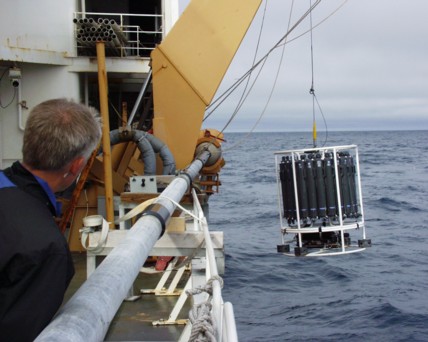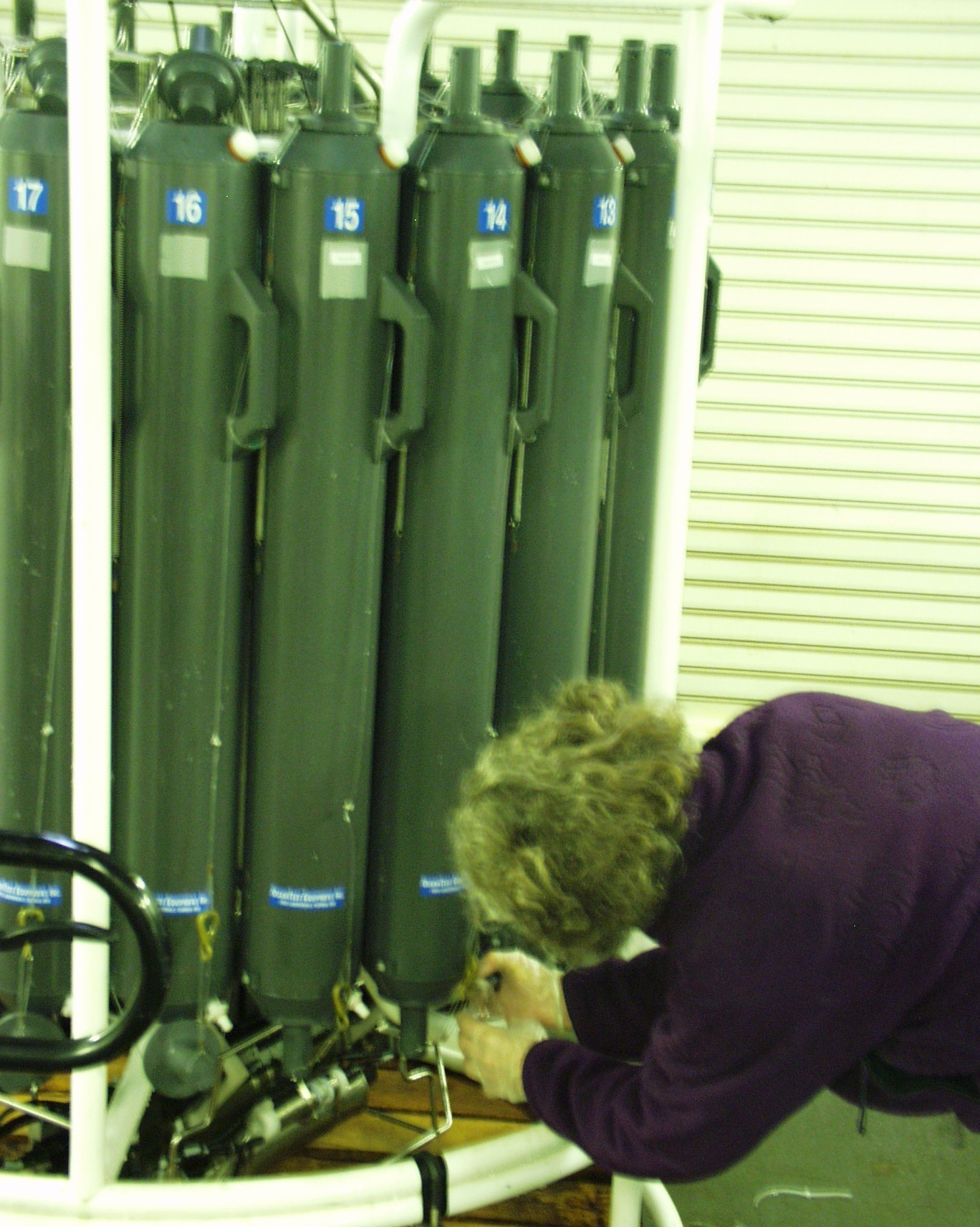|
|
Expedition
Expedition | People
|
Log - July-26-2003
by Gerhard Behrens
Previous | Next
| Water testing begins |
 |
For lots of scientists on this cruise this day began at midnight. The first cage of bottles was dropped into Baffin Bay a little before midnight. It was lowered on a wire to 2,400 meters. That is two and a quarter miles down. Or, think of it as 24 soccer fields end to end. When it was brought back up, an electric signal told a certain bottle to close tight and trap seawater at that spot. Each plastic bottle can hold 12 liters of water (about 3 gallons). The scientists had to decide where they wanted water samples. For example, they might have water from 2,000 meters, 1,500 meters, or 1,000 meters. They can get up to 24 water samples from different depths. |
| When the samples arrive on deck, everyone wants to begin testing. It is VERY important that water samples are labeled and handled carefully. A glass bottle has to be rinsed out three times, and then a sample is squirted into a small bottle. It looks a lot like milking a cow, but instead of getting milk from an animal, the workers take seawater from big plastic bottles. Everyone is interested in getting started on lab tests. Some people stayed up most of the night working on their samples. |
 |
| Now that we are in Baffin Bay, where lots of testing will happen, the science crew begins a weird schedule. We collect water or drop in scientific equipment whenever we get to an important spot. Work could start around midnight as it did yesterday, or it could happen at 2:00pm or 2:00 am. Everyone has to be ready to work at any time of day or night.
|
| Which reminds me. Yesterday (Friday to Saturday) was our first night with no sunset. As the sun hit the horizon, it just cruised along a bit and then started a slow rise for another 24-hour period of light. We won’t see nighttime until August 16th, the last day on the cruise. |
| Yesterday I mentioned the job is dangerous and difficult, and I gave reasons for both. I found out four more reasons why doing this kind of science work is so hard. First, we are always getting closer to the North Pole, which messes up a compass, even one in a computer. That makes it harder to find the exact spot you hope to test. Second, Baffin Bay has strong currents, which makes it hard to keep the ship from moving while testing is going on. Next, Baffin Bay has a very bumpy bottom with its own hills and valleys. That makes it hard to find good spots for the tests. Finally, There can be lots of icebergs, and in the very far north, there can still be sea ice. Just think, “Titanic,” and you get the picture why icebergs can make a science trip harder. |
| Right now, we are steaming to the next “station” where we will drop the bottles and do the same thing all over again. The more samples we can get mean the more information we can get. The more information we get means the more we can understand about the waters and currents of this area. |
| On a goofy note, we received an order that all bathrooms were closed. This happens whenever someone puts the wrong thing down the toilet. We are supposed to use toilet paper from the ship and NOTHING else. Things as small as dental floss, tissue paper, or paper towel can block the system. Thankfully, the problem was solved in about an hour. Another goofy thing: If one engine goes out, there is a second one. If one fresh water evaporator goes out, there is a second one. If one steering system goes out, there is a second one. But, if the bathroom system goes out, there is not a second chance. |
| Check out the fun facts for some words scientists and crew use on the ship. |
|
